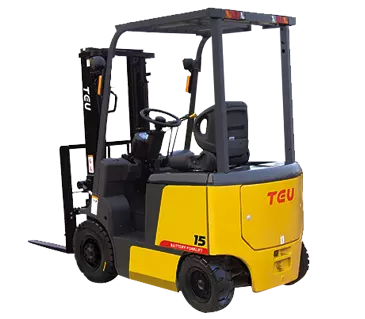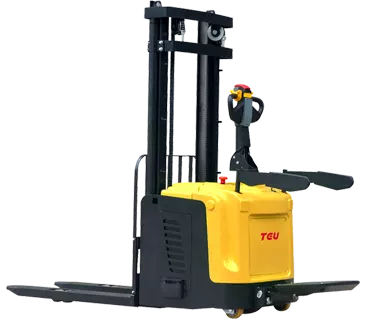Rough terrain forklifts are specialized pieces of equipment designed to handle challenging work environments, particularly those with uneven or rugged surfaces. Unlike traditional forklifts, which are mainly suited for smooth, flat ground, rough terrain forklifts are built to provide excellent stability, maneuverability, and power on rough, outdoor sites. These machines are indispensable for industries such as construction, agriculture, forestry, and mining, where operations are often conducted in less than ideal conditions. This article will explore the detailed features of rough terrain forklifts, emphasizing their critical role in enhancing productivity and safety in tough environments.
Powerful Powertrain:
Many rough terrain forklifts are equipped with high-power engines that provide sufficient power for traction on rough surfaces.
The engines are typically diesel-powered, which, compared to electric forklifts, provides longer operation time and is suitable for high-load environments.
High Ground Clearance:
Rough terrain forklifts have higher ground clearance, which helps avoid scraping the ground over uneven surfaces, allowing the forklift to pass over obstacles such as rocks, tree roots, and debris.
All-Direction Operation:
Some rough terrain forklifts offer all-wheel steering or adjustable steering angles, making them highly maneuverable in tight spaces or challenging terrains.
High Stability:
Thanks to their design and tire selection, rough terrain forklifts offer high stability when working on uneven ground.
Many models come equipped with hydraulic stabilization systems to maintain balance while loading or unloading, reducing the risk of tipping.
Longer Operating Time:
Compared to electric forklifts, diesel-powered rough terrain forklifts do not require frequent charging, enabling them to operate continuously for longer periods without interruption.
Expanded Advantages of Rough Terrain Forklifts:
Increased Work Efficiency and Productivity:
Rough terrain forklifts can work on different types of ground, making material handling more efficient. In environments like construction sites and mining, where other equipment may struggle, rough terrain forklifts can quickly and efficiently carry out tasks.
With high load capacities and lifting heights, rough terrain forklifts can handle heavier materials or perform tasks at higher elevations, reducing the need for frequent lifting and redundant tasks.
Cost Savings in Labor and Equipment:
Rough terrain forklifts can perform many tasks independently, reducing the need for other specialized equipment like crawler cranes or manual handling equipment, thus saving on equipment and operational costs.
Their stability and efficient operation also help minimize worker injuries, increasing workplace safety and reducing costs associated with accidents or equipment failures.
Versatility and Adaptability:
Rough terrain forklifts can be equipped with various attachments, such as material clamps, flat forks, log grapples, and hooks, allowing them to adapt to a wide range of industries and tasks. For instance, in forestry, forklifts can use log grapples to move trees; in agriculture, flat forks can be used to transport large quantities of crops.
Some models feature adjustable or telescopic forks, making them even more flexible when height extension or increased reach is needed.
Adaptability to Harsh Weather and Environments:
Rough terrain forklifts are designed to withstand extreme weather conditions, including high temperatures, cold, and rain. In snowy or muddy environments, their four-wheel drive and all-terrain tires offer better traction, ensuring the forklift does not get stuck or slip.
This adaptability is critical for equipment that operates outdoors or in extreme conditions, as it ensures consistent performance in any setting.
Enhanced Safety and Reduced Accidents:
Stability is key when working on unstable terrain, and high performance rough terrain forklifts are designed for better stability on uneven surfaces, greatly reducing the risk of tipping or other safety hazards.
Many modern rough terrain forklifts come with advanced safety features like rollover protection systems and overload alarms, further increasing operational safety.
Improved Operator Comfort:
The design of the operator’s cabin in rough terrain forklifts takes into account the need for long hours of operation, often featuring comfortable seating, air conditioning, and adjustable steering wheels to improve driver comfort.
Suspended seats and shock absorption systems help reduce vibrations during operation on rough surfaces, minimizing fatigue for the operator.
Whether it’s construction, agriculture, or forestry, these forklifts ensure tasks are completed safely, effectively, and with minimal downtime. Their robust design, high ground clearance, powerful engines, and ability to handle heavy loads make them a crucial asset for any business operating in challenging outdoor conditions. As industries continue to evolve, the demand for these adaptable machines is expected to grow, making rough terrain forklifts a cornerstone of efficient, reliable material handling.





